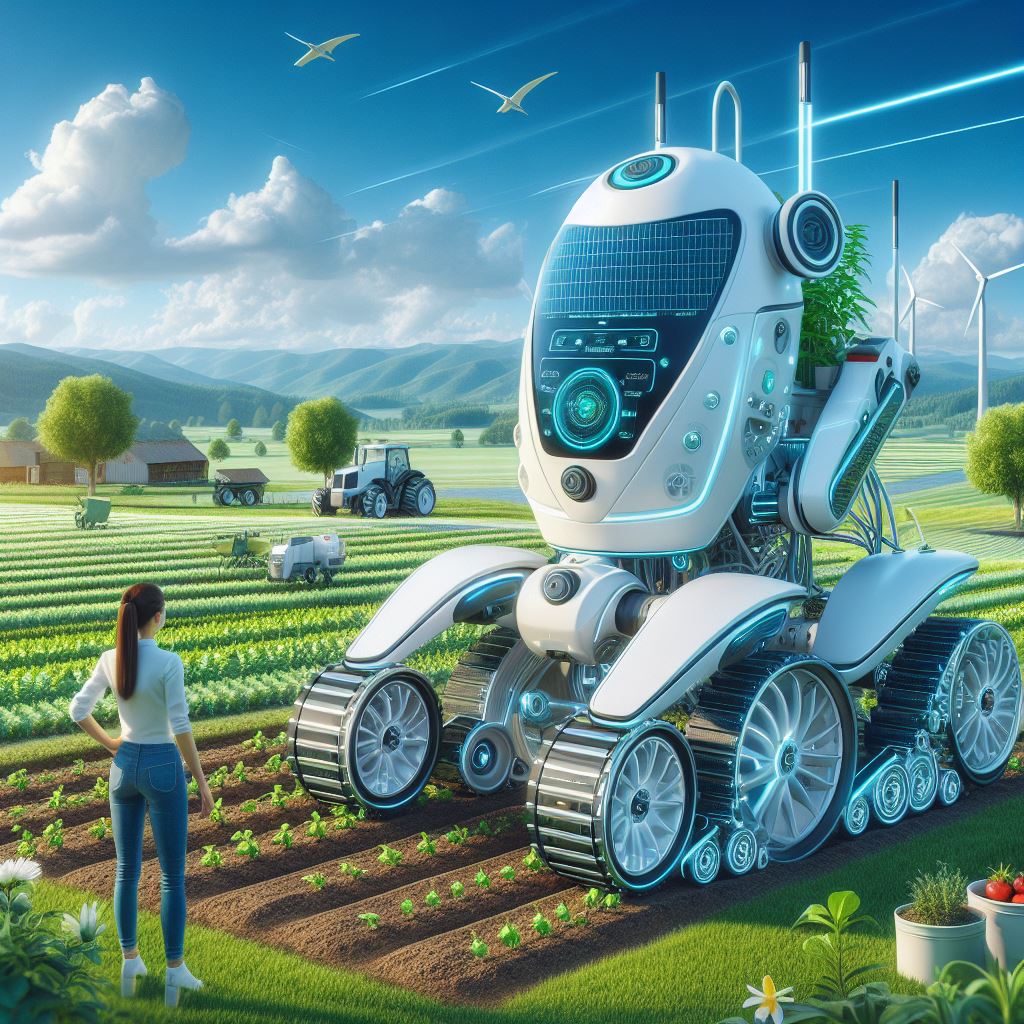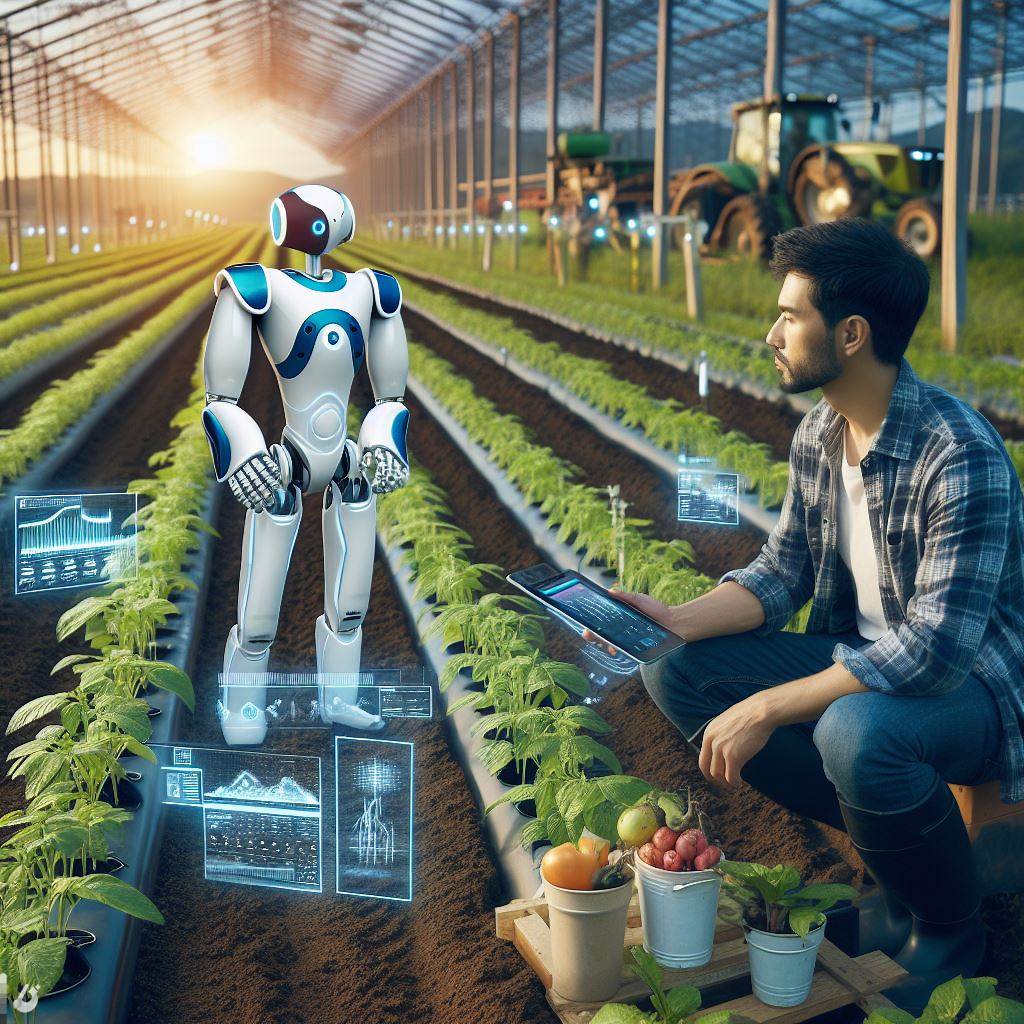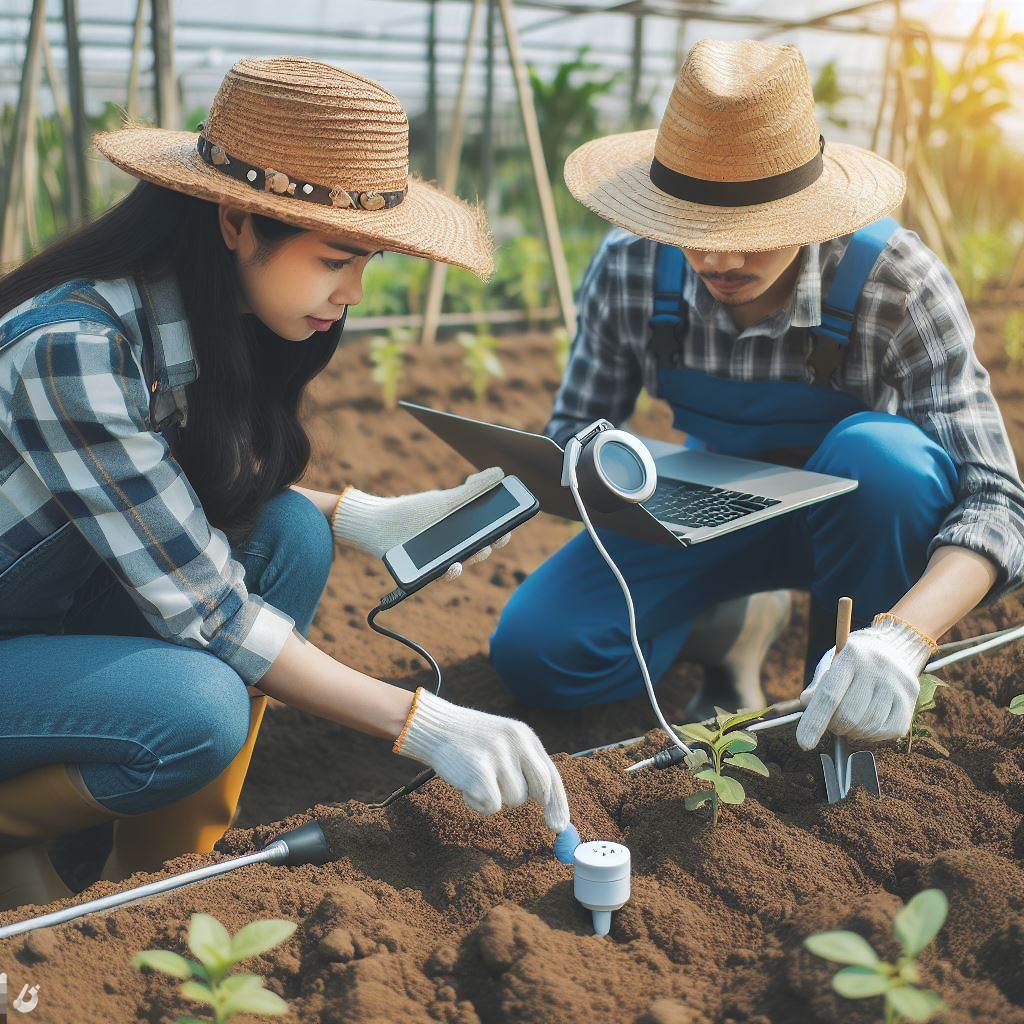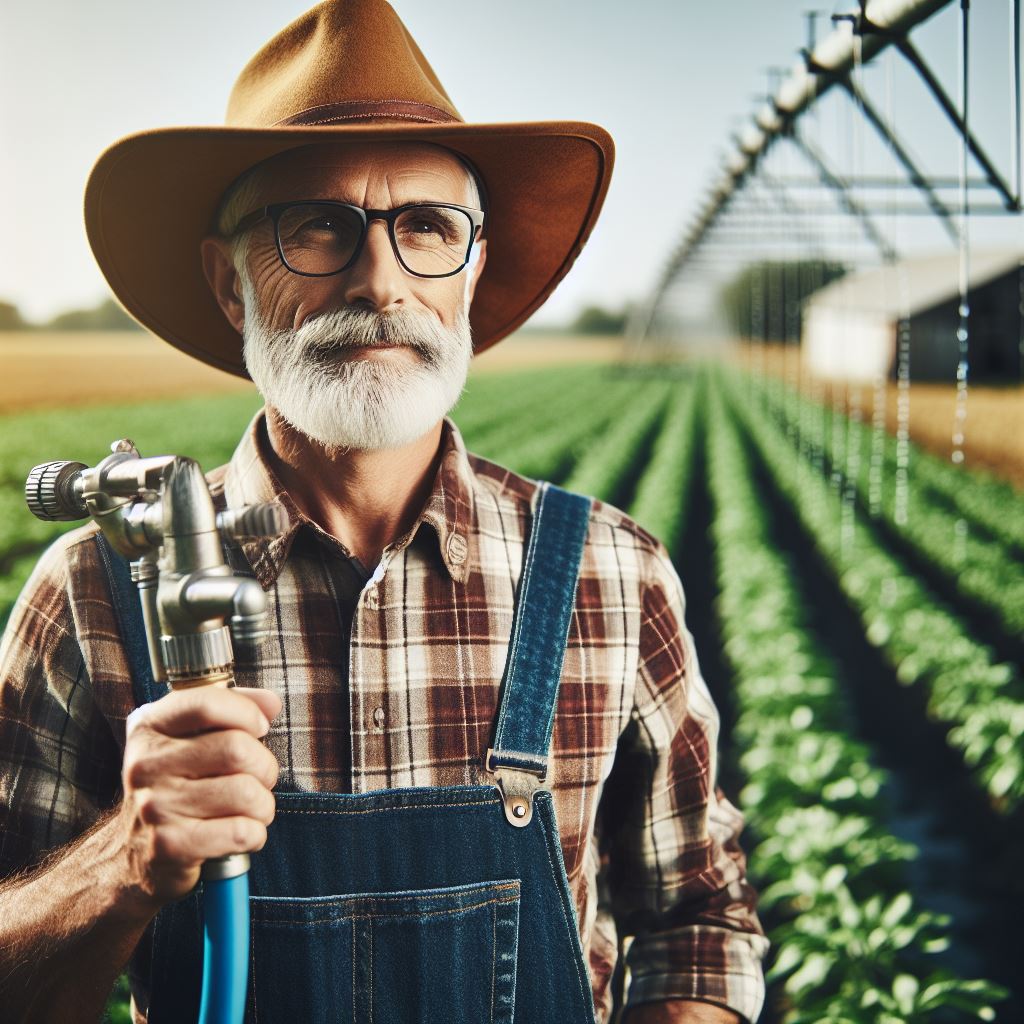Introduction
Precision agriculture, also known as precision farming, is a scientific approach to agriculture that utilizes technology to optimize farming practices.
By employing tools such as GPS and satellite imagery, precision agriculture aims to increase efficiency, productivity, and sustainability in modern farming.
Definition of Precision Agriculture
Precision agriculture involves the use of advanced technologies to precisely manage and monitor agricultural processes.
It encompasses various practices such as soil analysis, crop yield monitoring, variable rate application, and automated machinery.
Importance of Precision Agriculture in Modern Farming
Precision agriculture plays a crucial role in modern farming for several reasons.
Firstly, it enables farmers to make data-driven decisions, resulting in improved resource management.
By accurately mapping soil composition and nutrients, farmers can apply fertilizers and pesticides efficiently, reducing waste and environmental impact.
Secondly, precision agriculture enhances crop yield and quality.
Through real-time monitoring of weather conditions and plant health, farmers can optimize irrigation and adjust planting practices accordingly.
This helps maximize productivity and reduces crop loss due to pests or diseases.
Furthermore, precision agriculture facilitates sustainable farming practices.
By practicing precise application of inputs, farmers can minimize the use of chemicals, ensure soil health, and reduce the overall carbon footprint.
This approach contributes to long-term environmental stability and conservation of resources.
In summary, precision agriculture revolutionizes modern farming by combining technology with scientific methods.
Its ability to provide accurate data and enable informed decision-making promotes efficiency, productivity, and sustainability in agriculture.
Transform Your Agribusiness
Unlock your farm's potential with expert advice tailored to your needs. Get actionable steps that drive real results.
Get StartedAs technology continues to advance, precision agriculture will play an even greater role in shaping the future of farming.
The role of GPS in precision agriculture
Explanation of GPS technology
- GPS stands for Global Positioning System, a satellite-based navigation system.
- It provides accurate location and time information for any point on the Earth’s surface.
- The system consists of a network of satellites in space, ground control stations, and GPS receivers.
- GPS receivers use signals from multiple satellites to calculate precise positions.
How GPS is used in farming
- GPS is extensively used in precision agriculture to enhance various farming operations.
- Farmers use GPS to accurately position and navigate their agricultural machinery and equipment.
- It helps in precise planting of crops, spraying fertilizers and pesticides, and harvesting.
- GPS-guided machinery ensures that seeds, fertilizers, and treatments are applied in the right location.
Benefits of GPS in precision agriculture
- Improved efficiency: GPS enables farmers to optimize their field operations and minimize waste.
- Accurate field mapping: GPS technology aids in creating detailed and precise field maps.
- Yield monitoring: It helps in tracking crop yields, analyzing variations, and identifying problem areas.
- Precise guidance: GPS guidance minimizes overlapping, avoids misses, and maximizes productivity.
- Reduction in costs: By using GPS, farmers save on fuel, fertilizers, and other resources.
- Environmentally friendly: Precise application reduces environmental impact by minimizing chemical runoff.
In short, GPS plays a crucial role in precision agriculture by providing accurate positioning and navigation information.
It is widely used in farming for various operations, including planting, spraying, and harvesting.
The benefits of GPS in precision agriculture are numerous, ranging from improved efficiency and yield monitoring to cost reduction and environmental friendliness.
Read: CRISPR in Agriculture: Editing Crop Genes
Components and Applications of GPS-Guided Farming
GPS-Guided Machinery and Equipment
- GPS-guided machinery and equipment play a crucial role in precision agriculture.
- These machines are equipped with GPS receivers that provide accurate positioning data.
- This allows farmers to perform tasks such as planting, harvesting, and spraying with high precision.
- GPS-guided machinery ensures that crops are planted in the right location and at the optimal time.
- It helps reduce the use of resources by avoiding overlaps and minimizing waste in the farming process.
- Farmers can control and monitor their machines remotely using GPS technology, enhancing efficiency and productivity.
- The integration of GPS guidance systems with farming machinery has revolutionized modern agriculture.
Crop and Soil Mapping Using GPS
- GPS technology enables accurate mapping and monitoring of crops and soils.
- Farmers can create digital maps of their fields, marking specific zones based on soil conditions.
- By analyzing these maps, farmers can understand variations in soil fertility and moisture levels.
- This knowledge helps optimize resource allocation by targeting specific areas with required treatments.
- Crop mapping using GPS aids in identifying areas prone to diseases, pests, or nutrient deficiencies.
- It allows farmers to make informed decisions regarding fertilizer application, irrigation, and crop rotation.
- Precise mapping helps increase yield potential, improve crop quality, and reduce environmental impact.
Variable Rate Technology and GPS
- Variable rate technology (VRT) uses GPS data to apply inputs in varying quantities based on field conditions.
- VRT enables farmers to adjust fertilizer, pesticide, and seed rates according to soil variability.
- GPS-guided VRT systems ensure precise application, reducing wastage and optimizing resource usage.
- Farmers can create prescription maps using GPS data, tailoring input application to specific zones.
- VRT improves crop uniformity, minimizes input costs, and enhances environmental sustainability.
- This technology enables farmers to address field variability effectively and boost overall farm profitability.
Autonomous Vehicles and GPS Technology
- Autonomous vehicles equipped with GPS technology are transforming the farming industry.
- These vehicles can operate without human intervention, performing tasks such as plowing, seeding, and spraying.
- GPS provides accurate navigation for autonomous vehicles, ensuring they follow predefined paths.
- This eliminates the need for manual steering, reducing labor costs and improving efficiency.
- Autonomous vehicles equipped with GPS can precisely apply inputs, reducing waste and improving accuracy.
- GPS technology enables real-time monitoring and control of autonomous vehicles, enhancing safety and productivity.
- These vehicles are revolutionizing farming by increasing efficiency, reducing human errors, and saving time.
In short, GPS technology has revolutionized precision agriculture by providing accurate positioning data and enhancing farming practices.
GPS-guided machinery and equipment, crop and soil mapping, variable rate technology, and autonomous vehicles are key components and applications in GPS-guided farming.
With these advancements, farmers can optimize resource usage, enhance productivity, and make informed decisions, ultimately leading to a more sustainable and profitable farming industry.
Read: Automated Tractors: The Future of Ploughing
Advantages and benefits of GPS-guided farming
Improved efficiency and productivity
- GPS-guided farming allows for precise and accurate navigation, leading to optimized field operations.
- By using GPS technology, farmers can automate tasks such as planting, spraying, and harvesting.
- This automation reduces manual labor and increases the overall efficiency of farming operations.
- Farmers can save time by optimizing routes and avoiding unnecessary overlaps while working in the field.
- Accurate positioning helps farmers maximize the use of resources and ensures that crops receive adequate care.
Reduction in input costs
- GPS-guided farming enables targeted application of fertilizers, herbicides, and pesticides.
- With precise navigation, farmers can minimize the use of inputs by eliminating overlaps and avoiding wastage.
- Reducing unnecessary chemical applications not only saves costs but also minimizes the impact on the environment.
- Farmers can also optimize irrigation practices by monitoring soil moisture levels using GPS technology, reducing water consumption.
- By minimizing input costs, farmers can increase their profit margins and achieve higher financial sustainability.
Environmental sustainability
- GPS-guided farming promotes sustainable agricultural practices by minimizing the use of chemicals and resources.
- Precision agriculture reduces the environmental impact of farming by targeting inputs only where needed.
- By using GPS technology for field operations, farmers can avoid damaging sensitive areas such as water bodies or habitats.
- Precise application of inputs also reduces the risk of pollution and soil degradation.
- Overall, GPS-guided farming plays a vital role in preserving the environment for future generations.
Predictive analytics and data-driven decision-making
- GPS-guided farming generates a vast amount of data, which can be utilized for predictive analytics.
- By analyzing historical data such as weather patterns, soil conditions, and crop performance, farmers can make informed decisions.
- Predictive analytics helps farmers identify potential risks and take proactive measures to mitigate them.
- With the help of data-driven decision-making, farmers can optimize planting schedules, adjust fertilizer applications, and plan for pest control.
- GPS technology enables farmers to evaluate the success of their decisions and make improvements for future seasons.
In fact, GPS-guided farming offers numerous advantages and benefits to farmers and the agricultural industry as a whole.
Improved efficiency and productivity, reduction in input costs, environmental sustainability, and predictive analytics are just a few of the key benefits.
By harnessing the power of GPS technology, farmers can optimize their operations, minimize waste, and make data-driven decisions that lead to higher profitability and a more sustainable future.
GPS-guided farming is not just a revolution in agriculture; it’s a stepping stone towards a more efficient and environmentally conscious farming industry.
Read: Agri Solar Panels: Powering Farms Sustainably
Challenges and Limitations of GPS-guided Farming
Initial Investment and Technology Cost
- Implementing GPS-guided farming requires a significant initial investment in equipment and technology.
- Farmers need to purchase GPS receivers, sensors, and other necessary hardware.
- The cost of integrating GPS technology into existing farm machinery can be high.
- Additional expenses include software licenses, maintenance, and training for the farm personnel.
- Small-scale farmers might find it difficult to afford the upfront costs, limiting their adoption of GPS-guided farming.
Connectivity and Signal Issues
- GPS-guided farming heavily relies on a stable and reliable network connection for data transmission.
- Farms located in remote areas or areas with poor network coverage may face connectivity issues.
- Weak signals can lead to inaccuracies or even complete loss of data transmission.
- Interference from buildings, trees, or other geographical features can disrupt GPS signals.
- Farmers might need to invest in additional infrastructure, such as signal boosters or towers, to overcome connectivity challenges.
Skills and Knowledge Gap
- Farmers need to acquire specific skills and knowledge to effectively use GPS-guided farming.
- Learning how to operate GPS equipment, interpret data, and analyze results can be time-consuming.
- Traditional farmers without technical expertise may struggle to adapt to this technology.
- Training programs and workshops can help bridge the skills gap and ensure successful implementation.
- Access to training resources should be easily available to promote widespread adoption of GPS-guided farming.
Privacy and Data Security Concerns
- GPS-guided farming collects and stores a significant amount of data about farms and their operations.
- There is a risk of unauthorized access and potential misuse of this valuable data.
- Farmers need to ensure proper data security measures are in place to protect their information.
- Data breaches or system vulnerabilities can lead to financial loss or compromise farmers’ competitive advantage.
- Strict privacy policies, secure cloud storage, and encryption methodologies should be implemented to address these concerns.
GPS-guided farming has immense potential to revolutionize agriculture, but it faces challenges and limitations.
The initial investment and technology cost can be a barrier, especially for small-scale farmers.
Connectivity issues in remote areas or areas with poor network coverage can undermine the effectiveness of GPS technology.
The skills and knowledge gap among traditional farmers may hinder the adoption and utilization of this technology.
Furthermore, privacy and data security concerns must be addressed to safeguard valuable farm data from unauthorized access or misuse.
Overcoming these challenges requires collaborative efforts from agricultural organizations, governments, and technology providers.
Financial assistance programs can help farmers afford the necessary equipment and technology, enabling broader adoption.
Governments and telecommunications companies should work together to improve network coverage in rural areas, ensuring uninterrupted connectivity for GPS-guided farming.
Training programs and workshops can educate farmers about the technology and equip them with the necessary skills.
Additionally, strict data protection regulations and industry standards must be in place to address privacy and data security concerns effectively.
Showcase Your Farming Business
Publish your professional farming services profile on our blog for a one-time fee of $200 and reach a dedicated audience of farmers and agribusiness owners.
Publish Your ProfileDespite the challenges, GPS-guided farming holds great promise for improving agricultural efficiency, productivity, and sustainability.
By harnessing the power of GPS technology, farmers can optimize their operations, reduce resource wastage, and increase crop yields.
With continued advancements and investments in this field, the agricultural sector can further utilize GPS-guided farming to meet the global demand for food and contribute to a more sustainable future.
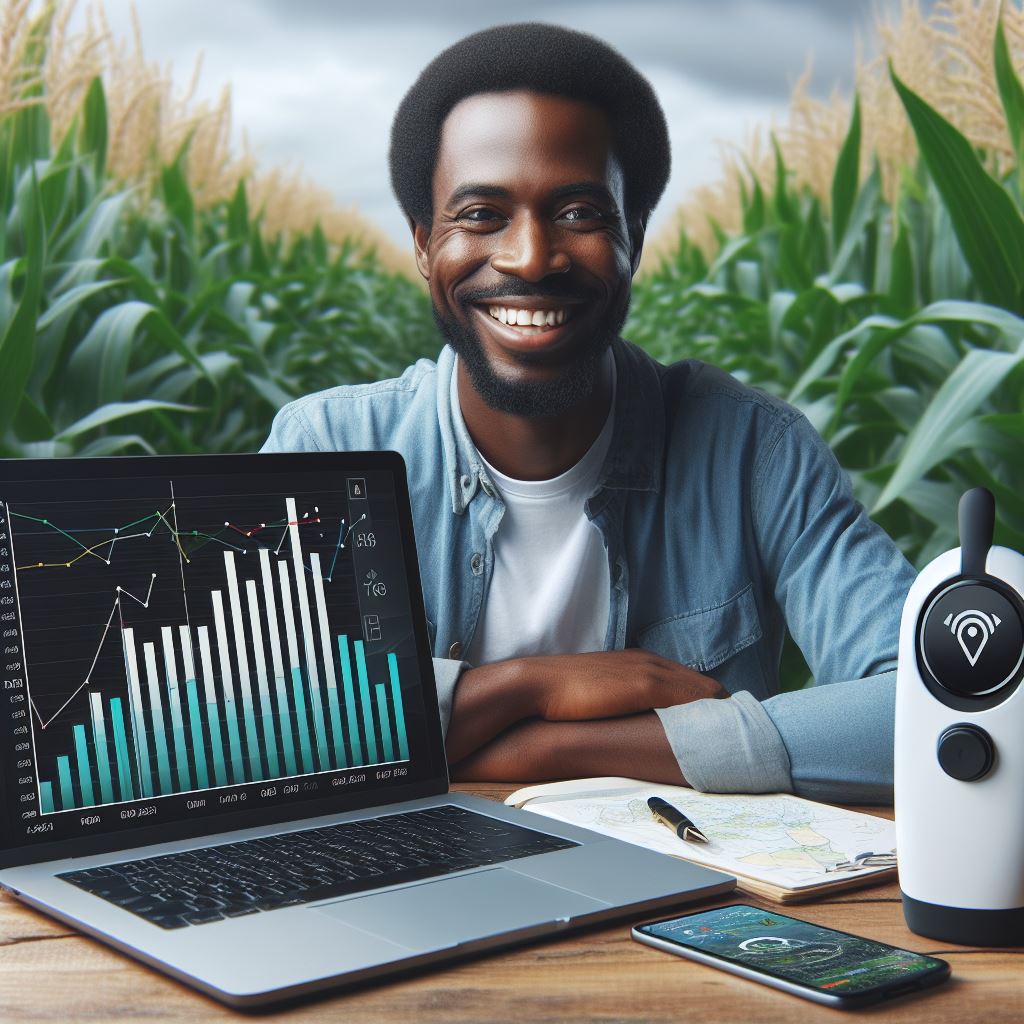
Delve into the Subject: Futuristic Barns: Automated Feeding Systems
Delve into the Subject: Smart Farming: The Rise of Agri Robots
Real-world examples of successful GPS-guided farming
Case studies of farmers adopting precision agriculture
- Farmer John Smith implemented GPS-guided farming techniques on his cornfield and experienced remarkable results.
- Smith’s case study revealed that GPS-guided planting reduced overlap, resulting in cost savings and improved efficiency.
- Another farmer, Sarah Thompson, embraced precision agriculture and used GPS-guided technology to optimize irrigation.
- Thompson’s case study showed that GPS-guided irrigation reduced water consumption by 20% while maintaining crop health.
Testimonials and experiences from farmers
- Farmer Peter Adams shared his positive experience with GPS-guided farming, emphasizing its impact on reducing manual labor.
- Adams stated that GPS guidance eliminated the need for physically marking field boundaries, saving time and effort.
- Jane Davis, a third-generation farmer, expressed her satisfaction with GPS-guided spraying, which improved pest management.
- Davis claimed that the accuracy of GPS-guided spraying decreased chemical usage, resulting in cost savings and environmental benefits.
Increased yields and sustainability achieved
- Implementation of GPS-guided farming has consistently led to increased crop yields among various farmers.
- Precision agriculture allows farmers to optimize seed placement, ensuring balanced growth and higher overall production.
- By reducing resource wastage, GPS-guided farming contributes to the sustainability of agriculture and protects the environment.
- Farmers embracing precision agriculture have witnessed reduced soil erosion and improved soil health over time.
- GPS-guided technology enables precision application of fertilizers, minimizing runoff and fertilizer leaching.
- The use of GPS guidance systems has also resulted in optimized harvesting techniques, maximizing crop yield and quality.
- Farmers practicing GPS-guided farming have reported better financial stability due to increased productivity and reduced costs.
- With GPS-guided technology, farmers can minimize input expenses while maximizing output, enhancing overall profitability.
- The adoption of GPS-guided farming has paved the way for more efficient use of resources, ensuring long-term sustainability in agriculture.
- By utilizing precision agriculture techniques, farmers can meet the increasing demand for food while minimizing environmental impacts.
In general, numerous real-world examples demonstrate the successful application of GPS-guided farming in the agriculture industry.
Case studies, testimonials, and experiences from farmers highlight its positive effects on efficiency, cost savings, productivity, and sustainability.
The increased yields achieved through precision agriculture techniques further contribute to meeting global food demands.
Embracing GPS-guided farming empowers farmers to optimize their operations, protect the environment, and ensure a sustainable future.
Read: Sustainable Tech in Agriculture: A New Era
Future prospects and advancements in precision agriculture
In recent years, precision agriculture has seen significant growth and development, with the integration of advanced technologies.
The future prospects of precision agriculture hold even more promise as advancements continue to be made.
Integration of AI and machine learning
- AI and machine learning algorithms have the potential to revolutionize precision agriculture.
- These technologies can analyze large amounts of data collected from sensors and provide valuable insights.
- AI can optimize crop management, including irrigation, fertilization, and pest control, based on real-time data.
- Machine learning algorithms can improve yield predictions, disease detection, and crop health monitoring.
- With AI and machine learning, farmers can make data-driven decisions to maximize productivity and reduce costs.
Use of drones and satellite imagery
- Drones equipped with cameras and sensors can provide high-resolution imagery of crops and fields.
- These images can be analyzed to detect diseases, identify nutrient deficiencies, and assess crop health.
- Drones also enable farmers to monitor vast areas of land quickly and efficiently.
- Satellite imagery, combined with remote sensing techniques, provides a broader view of crop growth and health.
- Real-time monitoring using drones and satellite imagery enhances decision-making and enables proactive actions to be taken.
Internet of Things (IoT) in precision agriculture
- The Internet of Things (IoT) refers to the interconnection of devices and systems through the internet.
- In precision agriculture, IoT enables the seamless integration of various technologies.
- Sensors placed in fields collect data on soil moisture, temperature, humidity, and other environmental factors.
- These sensors transmit data to a central system, where it is analyzed and utilized to make informed decisions.
- IoT also facilitates the automation of agricultural processes, such as irrigation and nutrient application.
- By connecting different components of the farming system, IoT improves overall efficiency and productivity.
The future of precision agriculture lies in the convergence of these advancements. AI and machine learning will further enhance data analysis and decision-making capabilities.
Drones and satellite imagery will continue to provide detailed insights and enable proactive monitoring.
The IoT will interconnect various systems in a seamless manner, leading to enhanced automation and efficiency.
With these advancements, precision agriculture has the potential to address key challenges faced by the agricultural industry.
Farmers can optimize resource utilization, reduce environmental impact, and increase productivity.
By harnessing the power of AI, machine learning, drones, satellite imagery, and IoT, precision agriculture will continue to evolve into a more sustainable and efficient farming practice.
Read: Agri-Drones: Changing the Face of Farming
Conclusion
Recap of the benefits and challenges of GPS-guided farming
In conclusion, GPS-guided farming offers numerous advantages including increased efficiency, reduced costs, and improved crop yields.
However, it also presents challenges such as initial investment and technological reliance.
Importance of precision agriculture for the future of farming
Precision agriculture, with GPS-guided farming at its core, holds great importance for the future of farming.
It enables farmers to optimize resource management, enhance environmental sustainability, and meet the growing demand for food production.
Closing thoughts and call to action for farmers
In closing, farmers should embrace the transformative potential of GPS-guided farming.
By adopting precision agriculture technologies, they can maximize their productivity, minimize waste, and contribute to building a more sustainable and resilient agricultural sector for future generations.
Let’s harness the power of precision agriculture and ensure a prosperous farming future.

